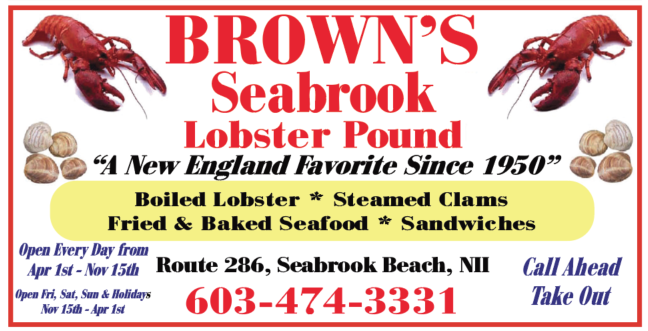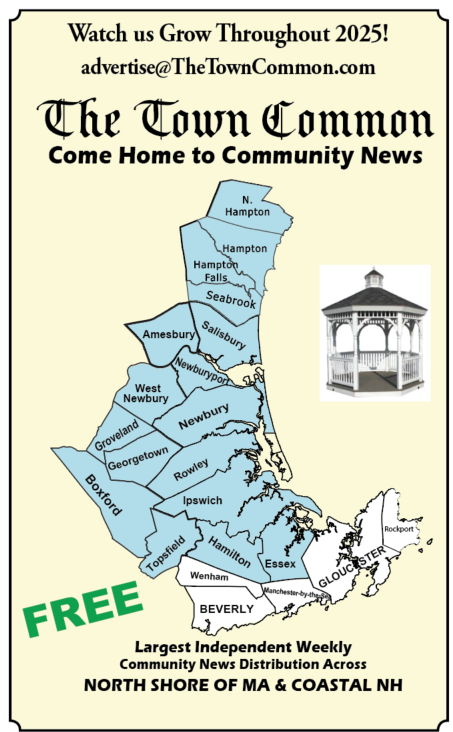REGIONAL – First Parish Newbury Food Bank, which celebrates its 10th year this month serving needy households in the region, stands as a shining example of community spirit and volunteer-driven compassion.
Entirely staffed by volunteers, the food pantry boasts more than 200 members who dedicate their time to serving hundreds of others.
The food pantry has come a long way. Founded by church members Jane Merrow and Sue Boccuzzo, when Steve Fram, a Newbury health inspector, asked for help in relocating the food pantry at the closing Byfield Methodist Church, Merrow and Boccuzzo persuaded the Newbury church leadership 10 years ago to adopt the food pantry as a mission. The challenge was where in the small church would there be space.
They pointed to the small church library, which had a couple of open shelves for a few cans of food. The first week it served only one customer.
Word spread and more clients showed up. The food came from a variety of sources from local restaurants to backyard gardens. The pantry soon outgrew the library.
It soon created an online ordering system that has improved the ordering and fulfillment process and made it easier for families to get exactly what they need.
When Covid struck the region, the pews in the church sanctuary presented an opportunity. They created the peanut butter and Mac & Cheese pews, along with designated space for pet food and toilet paper.
When the church reopened after COVID, the pantry moved to a donated three-room garage that once stored a classic car collection, while they broke ground on the current building.
Where? At the rear of the church, another underutilized spot.
Each week, the food bank now supports between 675 to 725 individuals in 285 to 312 households. Last week alone, the pantry served 36 adults, 147 children, 214 seniors and two homeless, walk-in guests.
The pantry’s reach spans well beyond Newbury to serve Georgetown, Ipswich, Newburyport, Rowley, Salisbury and West Newbury.
It offers a selection of 350 to 400 different food items. Guests can choose from fresh, canned or frozen fruits and vegetables, as well as pastas, beans, rice, cereals, dairy, frozen meats and sauces.
And it caters to specific dietary needs, offering gluten-free and low-sodium items, incontinence products and pet food.
On average, the pantry distributes between 45,000 to 50,000 pounds of food every month, brought in from a wide variety of sources, led by the Boston Food Bank, but assisted by.
Food distribution is both at the pantry and delivered, with more than 185 households receiving orders each Friday morning from volunteers who drive their own cars to make the deliveries and do a wellness check on the client.
Each week, volunteers call more than 130 households to assist the computer illiterate in placing orders. These calls often lead to meaningful and lasting relationships. One client said it was the best call she got every week, Merrow said.
Volunteers collect food donations from local businesses seven days a week, ensuring that edible items are rescued before going to waste. On Fridays afternoons, volunteers also visit local schools to recover food.
In schools, mini-pantries are stocked by the pantry volunteers to ensure students have enough food, allowing them to focus on their studies without their stomachs growling.
Families with children make up a significant portion of those served. Volunteers make a point to provide kid-friendly foods and essentials that help parents stretch their budgets.
“Working here is therapy for every single person who walks through this door,” Merrow said. “Even for me.”
She also calls the team a family, a sentiment echoed by other volunteers.
The pantry receives donations from a wide range of sources including Shaw’s Grocery Store, Middle Street Foods, Olive’s Bake Shop, the Lions Club, Amazon, which distributes palettes of dry good and pet food.
And there is Loretta’s Restaurant in Newburyport. Ted Epstein, owner of Loretta’s in downtown Newburyport, donates a percentage of the restaurant’s profits every second Wednesday to support the pantry. His donation each month is in the thousands of dollars, which helps buy food products that are not donated.
Thursdays are especially busy as volunteers prepare for the massive Friday delivery and distribution. The food bank is currently in need of more delivery drivers to keep up with demand. Anyone with a few hours to spare can make a real difference, Merrow said.
A free farmers market is planned for mid-June.
The pantry is now in its sixth month of participating in the Wellness Study, a two-year project sponsored by the Greater Boston Food Bank and Massachusetts General Hospital. The study aims to better understand how food pantries can support healthier choices among clients. Color-coded labels help guide decisions, with green indicating healthier options and red marking foods high in saturated fat, sodium and added sugars.
White labels are used for non-food items and foods that haven’t been ranked. The researchers are conducting interviews to help assess how much the color-coding system influences healthier food choices. ♦




